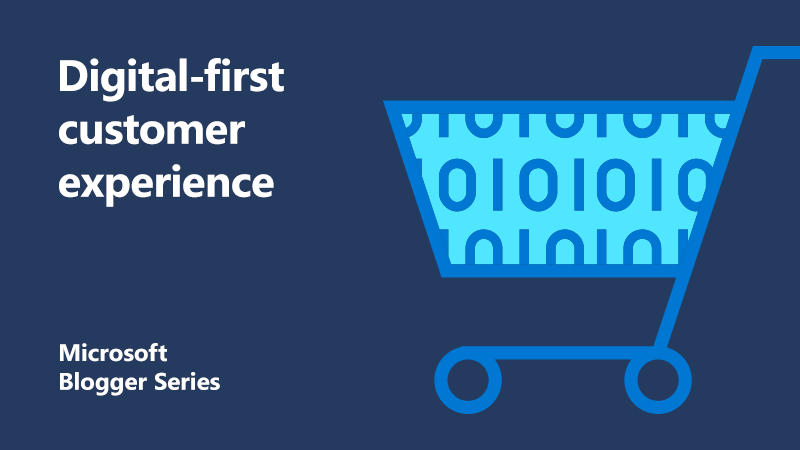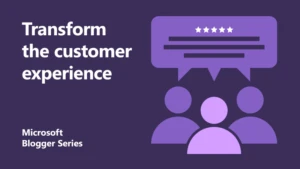
Why the customer experience needs to be digital-first
Customers are relying more and more on digital channels to buy, connect, and communicate. In order for businesses to be successful, they should be framing their future strategies around digital.
Consumer sentiment supports this. Wunderman Thompson’s latest Future Shopper survey found that 65 percent of consumers expect to use digital shopping channels more in the future.
But where should you be focusing, to support the expectations of consumers today and in the future?
Even the most digitally resistant customer groups are changing their behaviours and shopping more online. That sets brands and retailers the challenge of thinking ‘digital-first’ and creating experiences that will keep all customers satisfied. Here are four key areas to focus on:
1. Leverage a broad range of digital channels
Now is definitely the time to look at ways of maximising value from your own ecommerce store. Think about adding fresh, personalised, and shoppable content frequently (but not invasively) across your site. Or send reminders and discounts out to shoppers who have abandoned baskets.
You should also think of creative ways to connect with customers outside of the traditional channels. Social media has now become more important than ever. It plays the role of information source, entertainment or distraction, and a means of staying connected. Also, don’t just stick to the ‘Big Three’ of Facebook, Instagram, and Twitter. Platforms like TikTok have experienced significant growth recently. Think strategically about what channel works best for your customers before you start planning campaigns.
Early movers are now reaping the benefits. A Selfridges/Estée Lauder campaign on TikTok has already attracted 9.3 million views.
2. Optimise for a range of devices
 For the first time, December 2019 saw mobile overtake desktop in terms of market share in the UK. The gap has continued to grow, with mobile at 49.2 percent against and desktop’s at 44.4 percent. Therefore, it’s important to make sure your websites and customer journeys are optimised for mobile. Take time to understand how different users interact with a mobile site and how much time they will spend on it.
For the first time, December 2019 saw mobile overtake desktop in terms of market share in the UK. The gap has continued to grow, with mobile at 49.2 percent against and desktop’s at 44.4 percent. Therefore, it’s important to make sure your websites and customer journeys are optimised for mobile. Take time to understand how different users interact with a mobile site and how much time they will spend on it.
While people are using a range of different devices, it is also important to acknowledge they’re buying via a range of different channels. Understand your device mix and analyse the user journeys on each. Think about how they may want to carry out a certain task. Use your data to understand how they are doing this. For example, some customers may be accessing your website on multiple devices, such as browsing on mobile and then switching to desktop for purchase.
3. Test and adopt new technologies
Our Future Shopper survey consistently indicates that consumers prefer purchasing from brands that are digitally innovative. So, take a look at possible new technologies that can dial up the digital experience you’re offering.
For example, visual recognition technology can massively speed up classification of products. Creating personalised emails or targeted content will not only help to engage customers, but also provide insight into what content works best. This means you can focus on only producing the optimum solutions.
Finally, voice commerce is an important growing trend. Our Future Shopper 2020 survey found that 27 percent of online consumers have used a voice assistant to make a purchase. Your future customers are onboard too. We know from our Generation Alpha report that 59 percent of consumers aged 6-16 are comfortable talking to voice command devices and 22 percent have used one to make a purchase.
4. Optimise employees
 Customers seek honesty and personal experiences so it’s vital your customer service supports this. Update your website to reflect how you want customers to reach out to you, and offer a timescale on when they should expect to hear back. Ensure customers can easily navigate your website and find the information they need. Keep FAQs up to date, so that customers can self-serve online as much as possible.
Customers seek honesty and personal experiences so it’s vital your customer service supports this. Update your website to reflect how you want customers to reach out to you, and offer a timescale on when they should expect to hear back. Ensure customers can easily navigate your website and find the information they need. Keep FAQs up to date, so that customers can self-serve online as much as possible.
Create a digital form with fields which customers can fill out without speaking to an agent. The form should have enough information in it to direct the query to the right team efficiently and effectively.
If customers are using other channels like social media, then ensure that steps have been taken to cope with the increased demand. Consider upskilling and re-deploying employees to deal with social media traffic.
You can also deploy AI, chatbots and self-serve technologies to answer simple day-to-day queries, freeing up customer service agents to deal with more complex tasks.
These technologies can then be taught to escalate to webchat with an agent if they cannot answer the queries. Webchat is a great way to give quick answers to employees, and agents can often work on more than one issue at a time.
A platform like Dynamics 365 that provides a complete view of customer information is also useful. This will make it easier for employees to quickly access the information they need, when they need. It also means the customer will spend less time waiting for a resolution and more time getting a great experience.
If you are experiencing higher online traffic volumes, it is important to manage it effectively to avoid frustration for customers and ensure the business continues to operate efficiently.
Assess where your web traffic is coming from. It might make sense to pull back digital marketing campaigns to reduce the traffic coming to your website. Try introducing virtual queues and waiting rooms, with engaging landing pages full of content designed to keep customers occupied while they wait.
Personal experiences are about honesty
 Above all, make sure you maintain open, honest lines of communication with your customers. Make sure your digital channels are prioritising what is most relevant for your customers. Don’t think about selling a product, think about how you can show the value of your organisation and products to the customer.
Above all, make sure you maintain open, honest lines of communication with your customers. Make sure your digital channels are prioritising what is most relevant for your customers. Don’t think about selling a product, think about how you can show the value of your organisation and products to the customer.
Retailers and brands that put customers first, support them across channels and devices, and speak with clarity and honesty will be the brands that are most likely to sustain positive sentiment with customers old and new. They will be more resilient and adapt quickly to their customer’s changing needs.
This is an opportunity to do the right thing for your business by doing what’s best for your customers. Aided by digital technology, it’s time to seize it!
Find out more
Learn about new omnichannel, AI, and IoT updates for Dynamics Customer Service
Watch our Dynamics 365 Customer Service webinar
Learn more about Wunderman Thompson Commerce
Tools to empower your development team
Watch the on-demand session: Conversational AI-powered virtual assistants
How to build a bot in under 3 minutes
About the author
 Hugh is an internationally sought after digital commerce futurologist, heading up the Thought Leadership team at Wunderman Thompson Commerce. As an ex-Audi digital guru, Hugh uses his client-side experience and unique take on the future of commerce to help organisations set up for, and implement, digital change in the constantly evolving commerce market. His work focuses on helping ambitious clients to transact more digitally through strategic consultancy, covering digital business transformation, the future of ecommerce and conversion. He is a go-to spokesperson in press and TV for tech trends impacting ecommerce, and author of reports, white papers, and articles covering future shoppers, Generation Alpha, Digital Commerce Leaders, and peak selling.
Hugh is an internationally sought after digital commerce futurologist, heading up the Thought Leadership team at Wunderman Thompson Commerce. As an ex-Audi digital guru, Hugh uses his client-side experience and unique take on the future of commerce to help organisations set up for, and implement, digital change in the constantly evolving commerce market. His work focuses on helping ambitious clients to transact more digitally through strategic consultancy, covering digital business transformation, the future of ecommerce and conversion. He is a go-to spokesperson in press and TV for tech trends impacting ecommerce, and author of reports, white papers, and articles covering future shoppers, Generation Alpha, Digital Commerce Leaders, and peak selling.




